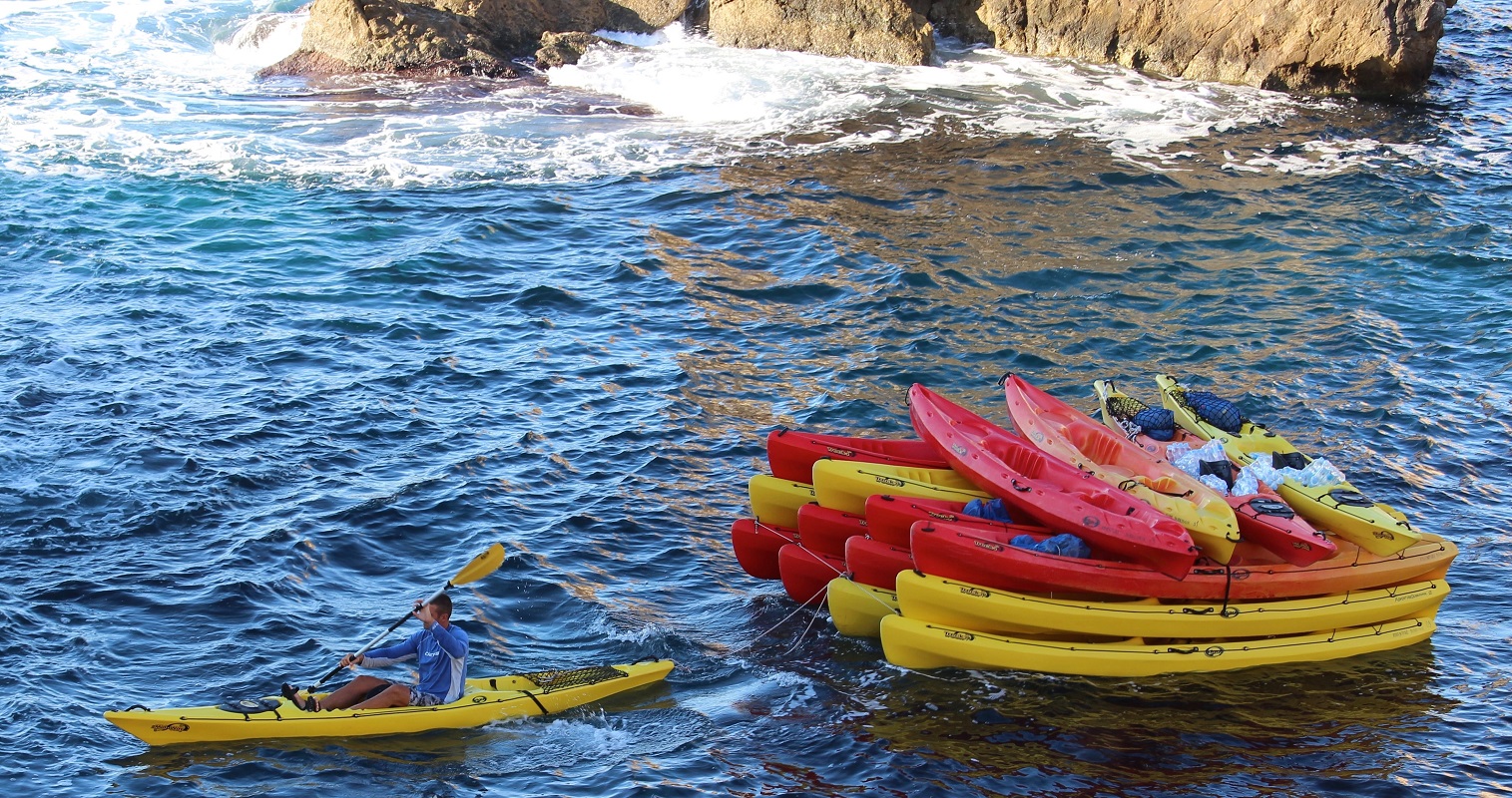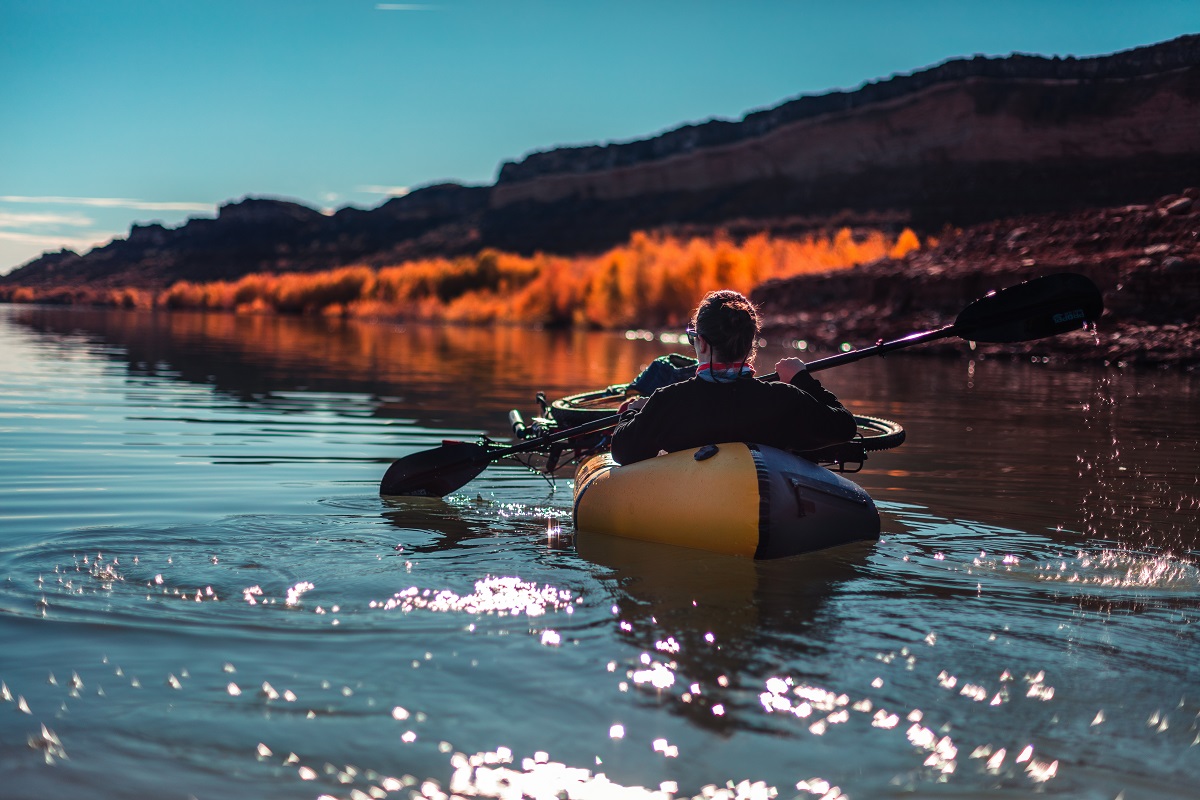
Shopping for Fishing Kayaks: The 7-Point Inspection
Table of Contents [Show]
Not everyone can afford a bass boat to get to those hard-to-reach bass beds and holes, and float tubes don't cover enough water to hunt down Kokanee and lake trout. Over the past few years, kayak brands have been targeting the itch anglers have been trying to scratch, and there are finally enough options on the market to suit most fishing styles and budgets.
Options I wish I had twenty years ago when I rigged up my third-hand Ocean Kayak with bungee cords, stolen plastic milk crates, and a low-profile aluminum camping chair for flatwater fishing trips (it's only trashy if you bring the cheap beer).
If I see you out on the water in a similar DIY fishing rig, you've earned my salute. If you're ready to upgrade to a fishing kayak purpose-built from the keel to the cockpit, here are the features you'll want to understand.
1. Propulsion
Pedal-powered kayaks let you focus on feeling the bite while your feet keep you in motion. This is especially helpful when you're trolling deep water or maintaining your place in slow-moving currents. There are trade-offs, though; the fins reduce your boat's draft, limiting your access to shallow spots and requiring you to take care over sand and gravel bars. While beaching, despite so-called "weed-proof" designs, you'll still spend time untangling yourself from invasive Eurasian milfoil.
Hobie's long been the pedal-drive forerunner, but Brooklyn Kayak Company is one of several manufacturers that have been closing the distance. Exhibit A: The BKC PK13 pedal-drive boat.
And guess what? Many fishing kayaks, including a few folders or inflatables, are compatible with trolling motors.

2. Speed, maneuverability, and stability
Fishing 'yaks trade speed for stability. There's no way around it. There's a lot that happens on deck: pawing through tackle boxes and beer coolers, getting into position to make the perfect cast, and everything else involved with landing that once-in-a-lifetime trophy. It's tough enough to net a fish with one hand and hold the selfie stick in the other without worrying about flipping or bailing over the side. Some boats are so bombproof they'll allow you to stand and shift your weight around, within reason.
Longer boats track better, but shorter boats are more agile. A sleek, narrow beam (width) efficiently cuts through the water with less resistance, but wider boats offer far more stability. Find a balance that works for you and your favorite water, and take advantage of tie-breakers. Rudders, either hand- or foot-operated, help shorter boats stay on course, and aftermarket outriggers can keep you from toppling over like a drunken sailor.
3. Seat height
You can fish from any kayak, but sitting higher on the deck gives you better sight lines and range of motion. In my opinion, seat height is the angling kayak's defining feature. When you're checking out floor models and demos, put on your PFD and spend some time in the captain's chair. Is it adjustable? Does it disassemble or fold down for easy transport? How securely is it attached to the deck? Does it have a massage feature and integrated cup holder? Remember, the goal is to get away from the bungee-cord-and duct-tape aesthetic.
4. Accessory mounts and hull ports
The most popular mounting systems out there offer adapters to let you mix-and-match brands. Installing base mounts might require a drill and nerves of steel, but most fishing kayaks on the market come stock with some sort of built-in system for attaching rod holders, fish finders, navigation aids, sun shades, and even sails.
Fish finding transducers and bait tank systems require passages through the hull. Drilling your own may void a kayak's warranty at best, or at worst compromise the hull's integrity. Take this into account if you plan to modify a boat that doesn't already have built-in ports and mounting equipment.
5. Compartments and deck space
Are you a gear head? Do you plan on multi-day trips on the water? Is your Labrador Retriever your good luck charm? I know better than to tell anyone which storage configurations are best for them because everyone has their own finicky way of stowing their gear. Imagine how you'll stow your current equipment, leaving plenty of room for DIY dinking around, especially if you want to build your own livewell for baitfish or tourney weigh-in candidates.

6. The inflatable option
Inflatable kayaks make paddling accessible for those with less storage space at home and in their vehicles. My first inflatable 'yak was an Advanced Elements Expedition, and since then I've purchased two more of their hybrid inflatables. I can't say enough about their products, but I didn't bite when they introduced their Straitedge Angler series. There simply weren't enough fishing-friendly modifications to coax an upgrade, especially given my predisposition to Macgyver the most out of what I have to work with.
My pick for an inflatable fishing kayak? The NRS' STAR Pike, with its lower-profile STAR Rival running a very close second. Any whitewater river rat knows NRS' reputation for reliability and ruggedness, and they've been building raft frames for fishing guides for years. They know their audience. It shows in both models' generous placement of Scotty accessory mounts, and the "open concept" design and tie-down spots allow for you to stow dry bags, coolers, and gearboxes as you see fit.
7. Transportability
If you need a truck to haul your fishing kayak, you might as well go all-in and pick up a slightly-used Ranger Z521L ICON. Ok, well, maybe six figures is a little steep, but we anglers tend to love a little hyperbole now and again. Most fishing kayaks weigh about the same as standard 'yaks in the same class, and you won't have a tough time finding ready-made roof racks for your boat. If weight and mobility are an issue, tow-behind kayak trailers like the Right On Multi-Sport kayak trailer are affordable and very convenient options.
Stop futzing, and start fishing!
Customizing your fishing kayak doesn't have to require a Xanax prescription. There are all sorts of aftermarket gadgets to keep you busy in between fishing trips, but a bare-bones, angler-minded boat with the right hull and seat design will put you on the fish within budget, and without the hillbilly hoots and hollers.
Featured Image - Moraine Lake Lodge kayaks in Alberta, Canada. Photo by Peter Goddard.


